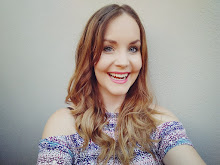When I graduated from my Post Graduate Diploma in Marketing at the University of Stellenbosch, I was completely certain I wanted to pursue a career in digital. One of my lecturers told me that working in TV would be FAR more exciting, but there was something about the small screen that intrigued me then, and intrigues me still.
First of all, we can all agree that the internet is a strange place. One filled with cat memes, kimojis and TAKE THIS QUIZ TO FIND OUT WHICH PLANT YOU ARE quizzes. Downright bizarre. But it is also a quiet reminder that everything is possible – from bloggers who make money from nothing more than content and vloggers driving Discovery Sports (how did I miss that Jay Alvarrez and Alexis Ren broke up!) to amazing crowd sourced philanthropy projects, and cultural explosions online #blacktwitter
It really is a jungle out there in the internet and that’s why it was love at first sight. Anyway, with a healthy amount of dubious enquiry into how one becomes a digital strategist as with most agency jobs (in Cape Town at least) that one has to do an internship. Despite being the most hated word for young job market entrants, I will concede that it served me well. Unfortunately, it’s challenging to be specific about what kind of intern you would like to be, but you soon accept there is really only one kind. It’s a healthy dose of humble pie, mixed with a hunger to learn all you can from anyone willing to teach you. So the minutia is usually irrelevant. Anyway for the sake of accuracy, I was rejected and then later accepted as a Project Management intern at a small digital agency. Despite earning only R3500 a month, I was over the moon to at least be able to sponge up knowledge from a talented team. I soon became known as the Powerpoint expert, and put together a lot of presentations like how WeChat was to be the NEXT BIG THING in South Africa. Whilst not all the trends were on fleek, my company recognized that I would be better suited to strategy. And so I became the only strategist, reporting into the Head of Project Management. I was mainly self-taught, focussing a lot of time on how to set up UTM tracking, how to run paid media, Google Analytics and researching trends on sites like Trendwatching. Five years later, I am the Head of Strategy, overseeing all strategy work done in the company to ensure clients receive the best possible strategies which will have the largest impact on their bottom line.
The most common misconception about being a digital strategist is that there is one University degree or short course which can prepare you. There are just so many different kinds of strategists that it is tricky to find a one stop shop. In the agency world you get: SEO (search engine optimization) strategists, content strategists, social strategists, CRM (customer relationship management) strategists, CRO (conversion rate optimization) strategists, ecommerce focussed strategists and creative strategists. And it’s a double edged sword as I found it tough it inherently KNOW what kind of strategist I would be (and therefore specialise too soon). But fear not – it really is a case of trial and error – as with most things, finding out what you DON’T want is as important as knowing what you do want. But, where to begin?
1. Job Shadow
Job shadow or undertake a short internship (preferably one with an offer of employment at the end of it)
2. Have an open mind
Just because you love social media, does not mean you will necessary work exclusively in social media as you often end up tailoring your skills to your agency’s offering
3. Do the short courses you wanna do!
Do the short courses which APPEAL most to you – avoid the very generic or the very specific at first. I have done courses where I felt I didn’t get great value, because I either knew too much or not enough about the course matter. Instead make it a priority to ENJOY it as you will learn the most when you heart is in it
4. Go to events
Keep a look out for events & talks in your area – some agencies host talks to give their heavy weights a chance to shine, and win over bright young minds (to employ) as well as clients in the field
5. CHALLENGE yourself
Digital strategy is not something which comes easily to ANYONE. It is harboured over years of, I hate to say it, criticism – but also guidance, team work and getting to know WHAT WORKS!
1. Job Shadow
Job shadow or undertake a short internship (preferably one with an offer of employment at the end of it)
2. Have an open mind
Just because you love social media, does not mean you will necessary work exclusively in social media as you often end up tailoring your skills to your agency’s offering
3. Do the short courses you wanna do!
Do the short courses which APPEAL most to you – avoid the very generic or the very specific at first. I have done courses where I felt I didn’t get great value, because I either knew too much or not enough about the course matter. Instead make it a priority to ENJOY it as you will learn the most when you heart is in it
4. Go to events
Keep a look out for events & talks in your area – some agencies host talks to give their heavy weights a chance to shine, and win over bright young minds (to employ) as well as clients in the field
5. CHALLENGE yourself
Digital strategy is not something which comes easily to ANYONE. It is harboured over years of, I hate to say it, criticism – but also guidance, team work and getting to know WHAT WORKS!





